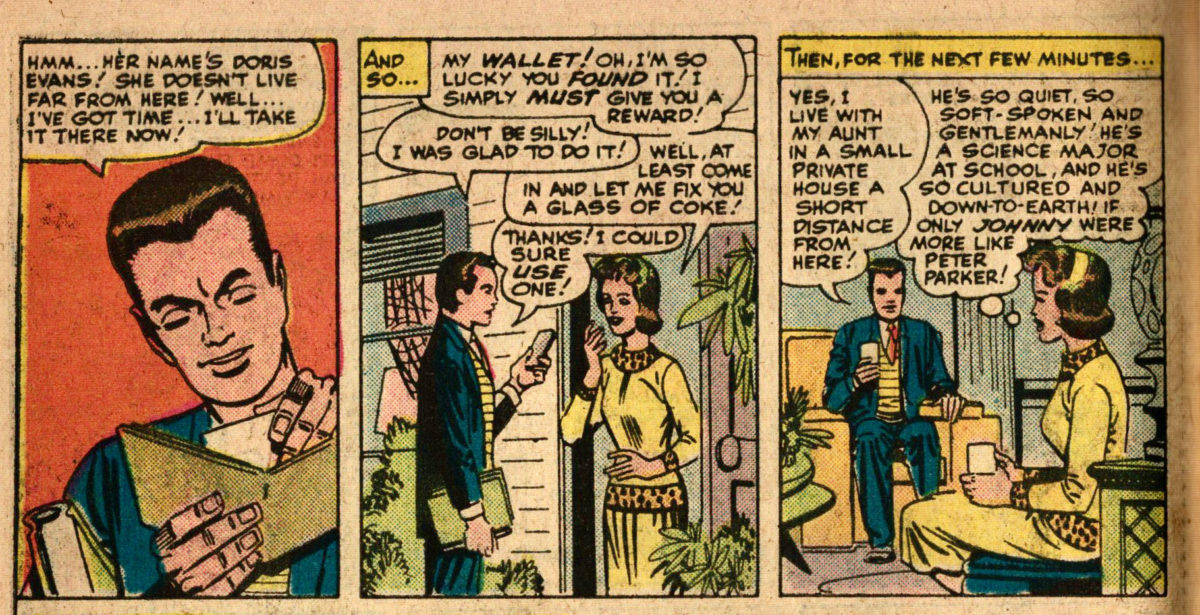Featuring: Tales of Asgard
Release: October 1, 1964
Cover: December 1964
12 cents
Superbly written by: Stan Lee
Supremely drawn by: Jack Kirby
Savagely inked by: Vince Colletta
Sagatiously lettered by: Artie Simek
5 page
| Previous | #279 | Next |
|---|---|---|
| Journey Into Mystery #111 | Reading order | Daredevil #5 |
| Journey Into Mystery #111 | Journey Into Mystery | Journey Into Mystery #112 |

The theme of many of these early Thor stories is that Loki is still considered a friend and ally by Thor, yet Loki is always secretly trying to get Thor killed, usually in pretty non-subtle ways. This has been going on since they were children.
Loki has recommended a short cut through a forbidden forest, then goads Sigurd and Thor into battle. Balder is suspicious.
Continue reading “Journey Into Mystery #111, Story B”



































